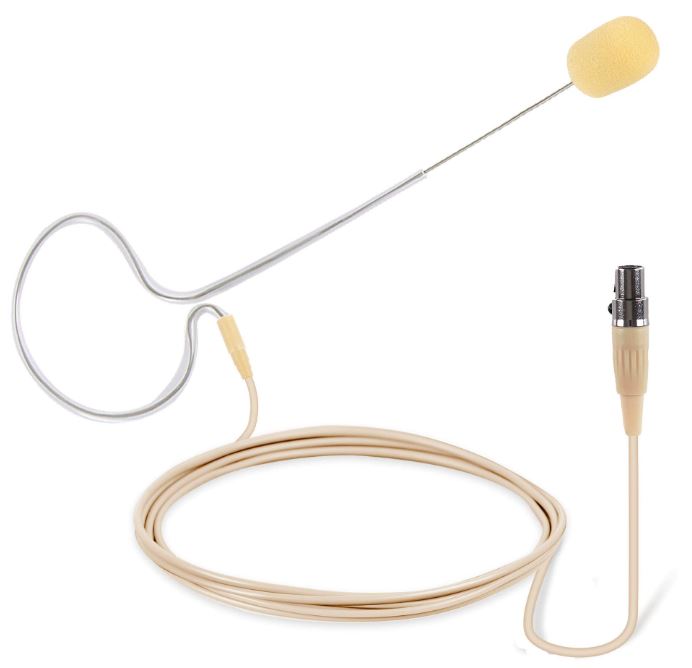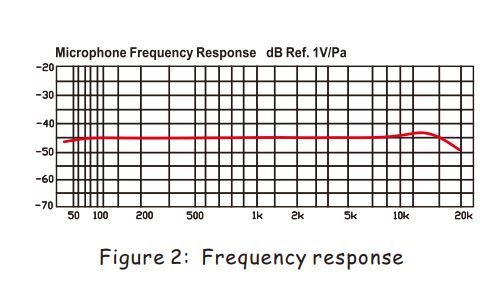Pyle PMEMS10 In-Ear Back Electric Microphone

About Pyle
Pyle is a well-known consumer electronics company that specializes in manufacturing a wide range of audio equipment and accessories. The company was founded in 1960 and is based in Brooklyn, New York. Pyle Audio has built a reputation for producing affordable and quality audio products, catering to various consumer needs.
General
PYLE PMEMS10/PMEM1 mini ear-hanging microphone is ideally suited for vocal sound and speech application which requires much freedom of movement. The unique tiny size and super light weight provide a comfortable and optimum fit for any occasion.
Such as dance and sports instructors, Great for video use, the mini microphone is practically invisible. The microphone ensures a perfect blend of the microphone for discreet appliances. It is available in Skin and Black Colors.
Features
- High-quality back electret condenser capsule
- Flat frequency response and superior EMI suppression Omni-directional polar pattern
- Easy to wear headband
- Easy-fit foam windscreen
General rules for use
- Place the headband around the side of the head.
- Aim the microphone toward the corner of the speaker’s mouth.
- Connect the microphone to the appropriate wireless headset.
- Always use the supplied foam windscreen to control breath noise.
Connectors
- SHURE type 4pin mini

- XLR Standard 3.5mm plug

- 1/ 4’’Atapter

Specifications
- Model: PMEMS10/PMEM1
- Element: Back Electret Condenser
- Polar Pattern: Omni-directional
- Frequency Response: 20Hz- 20KHz
- Sensitivity: -45dB± 3dB
- Output Impedance: 2000Ω± 30%
- Max.Input SPL: 130dB
- S/N Ratio: >70dB
- Power Supply: 1.5V-10V
- Cable: Φ1.5*1.2M
- Dimension: Φ5mm
- Color: Skin
- Connector:
(PMEMS10)SHURE type 4pin mini XLR,
(PMEM1)Standard 3.5mm plug+1/4’’Atapter - Accessories: Windscreen
Polar pattern

Frequency response

FAQs About Pyle PMEMS10 In-Ear Back Electric Microphone
How far away should I stand from a microphone?
The best distance from your mouth for the most popular type of microphone, a large-diaphragm condenser, is between 6 and 12 inches.
What makes it a microphone?
Around 1827, Wheatstone used the term “microphone” for the first time to refer to a purely acoustic instrument he had created to amplify faint sounds. The word is of Greek origin, with the prefix “micro” (tiny) and “phon” (sound).
What are the microphone’s three major components?
Inside the capsule of a dynamic microphone are three basic components: a magnet, a thin metal diaphragm, and a metal coil. The diaphragm moves when there are sound waves. The coil is subsequently moved by this vibration.
Active or passive condenser microphone?
active
Do condenser microphones require power?
In summary, phantom power is a kind of electrical power source that is used to power on-the-go electronic gadgets. Dynamic microphones don’t need phantom power to function, whereas condenser mics do. Make sure phantom power is enabled on the device you are using a condenser microphone with.
What is a condenser microphone’s voltage?
48 to 12 volts
What is the cardioid microphone’s angle?
If we base our acceptance angle on the spots of -6 dB, the cardioid microphone has a 180° acceptance angle. This suggests that within 90 degrees of its on-axis line on either side, the microphone will most likely collect sound quite reliably.
Which microphone can take up far sound?
far-reaching shotgun microphone
What is the ideal location for a microphone?
Avoid placing the microphone in front of your mouth. To stop breathing sounds, hold it below or to the side of your mouth. Maintain a distance of 1 to 3 inches between the microphone element and your mouth. The microphone’s front should be facing your mouth.
What size room is required to have a microphone?
Think about the amount of guests and the size of your room first. any gathering larger than 30 persons, or any space larger than 30 feet by 30 feet
For more manuals by PYLE, Visit Manualsdock
[embeddoc url=”https://manualsdock.com/wp-content/uploads/2023/08/Pyle-PMEMS10-In-Ear-Back-Electric-Microphone-User-Manual.pdf” download=”all”]


